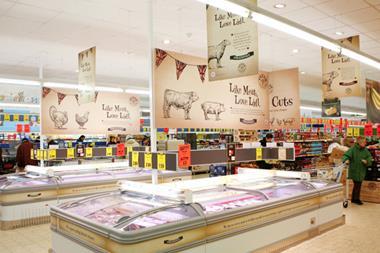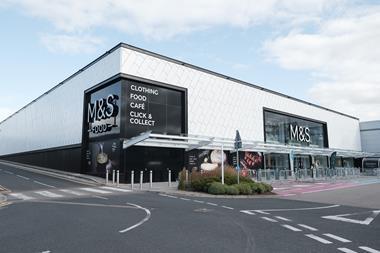Wind turbines were once hailed as the saviour of UK energy plc. The nation may not have enough sun to sufficiently power solar panels, ran the logic, but it has more than its fair share of wind. Unfortunately, they haven’t been quite the salvation many expected.
Many experts argue that they are completely inefficient and cost a fortune to erect, maintain and repair. Even the ‘greenest government ever’ is divided over their merits - or lack thereof. David Cameron famously erected one on the roof of his home, only to take it down around two years later.
In The Sun this month, London Mayor Boris Johnson snorted derisively: “No-one seriously believes they are the answer to our power shortages, not when they seem to spend so much time motionless, or turning so slowly they wouldn’t pull the skin off a rice pudding.”
Cabinet members have also been caught squabbling over the issue, anti-turbine environment secretary Owen Paterson clashing with pro-turbine energy secretary Ed Davey when Davey accused him of living in the “Stone Age” and claiming he would “cull wind turbines faster than he can cull badgers”.
Yet, while neither the experts nor Parliament have reached an accord, it’s clear that some food and drink manufacturers have been won over by wind turbines. McCain has installed three 125m turbines to generate electricity for its Whittlesey factory near Peterborough and claims it’s the first major UK food manufacturer to use alternative energy to power a large factory.
The Co-operative Group has erected a number of turbines at its White Mill Farm in Cambridgeshire as part of a plan to generate 25% of its electricity from renewable energy projects by 2017 and Bernard Matthews is currently trying to get planning permission to build turbines on land it owns in Norfolk.
So do they know something the experts and politicians don’t? Or are the doubters right - is the case for wind turbines just a load of hot air?
It’s clear from the political discord that wind turbines are an emotive subject. Certain Fleet Street tabloids (and some of the broadsheets) love to do a bit of turbine bashing, so it wasn’t surprising that they leapt on to a report published by influential think tank Citvas last year, which claimed that an over reliance on wind power could be more damaging to the environment than using traditional power sources.
But this report - and others like it - haven’t deterred a growing number of UK companies, particularly in the agricultural supply chain, from investing in technologies that will enable them to generate ‘home-grown’ sustainable energy.
Numerous farm operations have already set aside chunks of land to erect turbines to generate sufficient power for their own use and feed any excess back into the national grid, with hundreds more in the planning pipeline, according to Paul Mahon, head of business development for South West insurer Cornish Mutual.
Do the numbers stack up?
These applicants clearly haven’t been put off by question marks surrounding whether or not wind turbines stack up. Neil Turner, sales and marketing manager at renewable energy consultancy RES Advisory, concedes that they’re not going to work for everyone. For instance, turbines need to be sited in a location that has good wind speeds and is close to a grid connection.
“Businesses need a consultant with access to accurate wind data from the outset and they then need to partner with a knowledgeable expert to provide guidance on site feasibility, appropriate siting, the planning process and the maintenance of the turbine,” says Turner.
“Essentially, we’re off the grid at Waxdale, powering a facility the size of 28 football pitches with renewable electricity”
Brad Goodwin, SC Johnson
However, the government is offering financial incentives to use renewable energy such as the Feed-in Tariff (FiT) scheme, which guarantees payment for the electricity generated and used and an additional payment for any surplus electricity exported to the national grid. The income from the FiT scheme and selling surplus electricity back to the national grid is index-linked and tax-free.
Furthermore, there are plenty of examples of food and manufacturing facilities that have made investment in wind turbine energy pay. SC Johnson’s Waxdale facility in Wisconsin, USA, runs entirely on energy created on site with approximately 60% of it now coming from renewable sources, including wind turbines.
“As a private company, SC Johnson is able to make decisions based on the long term,” says Brad Goodwin, the company’s vice president and group general manager, UK, Ireland & Scandinavia. “For the last two decades, we have set firm environmental goals every five years and regularly reported the results. Essentially, we’re off the grid at Waxdale, powering a facility the size of around 28 football pitches with renewable electricity.”
As well as reducing the company’s reliance on fossil fuels and cutting carbon emissions by 6,000 tonnes, the wind turbines also generate approximately eight million kWh of electricity per year - the equivalent of powering more than 700 homes annually. The turbines at Waxdale have also allowed the company to reduce its energy costs by around $500,000 per year.
Manufacturer take-up
On a smaller, but no less ambitious, scale, Dewlay Cheesemakers recently celebrated the third anniversary of its wind turbine installation, in a project developed in conjunction with Wind Direct, part of the Wind Prospect Group.
Between November 2010 and July 2013, it generated 15.83GWh of green electricity, the equivalent to the consumption of 1,362 homes. Energy from the turbine is around 30% cheaper than brownfield electricity as there are no system charges and energy produced is used by Dewlay with any surplus exported to the grid.
It’s little wonder given these sorts of results that others are hoping for a piece of the action. One of the UK’s leading suppliers of fresh potatoes, Greenvale, is close to securing finance for a 1.5MW wind turbine project at its Cambridgeshire site, also with the help of Wind Direct. Construction is expected to begin by the end of the year and the project will be supplying electricity to the factory by next summer.
When fully operational, Greenvale expects to generate more than 4,300MWh of electricity per year - the equivalent to that consumed by more than 1,200 households. Over half the energy created will be used by Greenvale, with the rest distributed to the national grid. The company expects to make savings of circa £80,000 in year one. According to Wind Direct marketing manager Lorna Hopkins: “Our clients save around 30% on the electricity they use, so typically £40,000 per turbine, but often much more. This size of project is very different to small-scale wind and can make a huge difference to business profits.”
It’s a compelling argument and one that grocery retailers and manufacturers are likely to find increasingly hard to resist - whether the politicians and experts think the argument in favour of wind turbines is a lot of hot air or not.

Are retailers’ mini-turbines delivering?
Not so long ago it was the big supermarkets leading the charge in green energy, with the likes of Tesco and Asda announcing the installation of mini wind turbines at a number of their stores.
With five wind turbines on its roof, Tesco in Diss became the UK’s first energy-efficient supermarket, with the company claiming such schemes would pay for themselves in three years. Today, however, turbines are conspicuous by their absence from new eco-stores, prompting some experts to dismiss them as token green gestures, capable of providing only a small amount of power.
In 2011, Sainsbury’s chief executive Justin King admitted wind “was not part of the solution” for the retailer, which has invested millions in low-carb technologies and claims to be the greenest grocer.
Sainsbury’s installed on-site wind turbines at its first flagship eco-store in Dartmouth, which opened in 2008, an experiment King subsequently stated had proved the technology was not right for the business. “It is not windy enough where most of our shops are,” he said.
Instead the company pursued other green technologies, including biomass, geothermal and anaerobic digestion.
Neil Turner, sales and marketing manager at RES Advisory, says it would urge organisations such as multi-site retailers to think larger scale and consider as a minimum a wind turbine of 500kW.
“The business case for these large turbines is compelling. Our HQ in Kings Langley is very efficiently powered by a 225kW turbine that has been providing electricity to the site for the past nine years,” he says.
Although the business case for investment in renewables remains strong, it is best made in integrated systems of appropriate generation and energy efficiency, not simply ‘vanity projects’ of small-scale low-output technology, agrees Forum for the Future’s head of energy Giles Bristow.
“Those with large rooftops or windy sites should think about looking beyond their farm gates or boundaries and consider the energy needs of their neighbours and key stakeholders and opportunities for co-investment.
“Experience of global players such as Ikea and Du Pont demonstrates that commitment to local renewable energy centred on stores and facilities can pay significant dividends and build huge local brand equity.”



















No comments yet